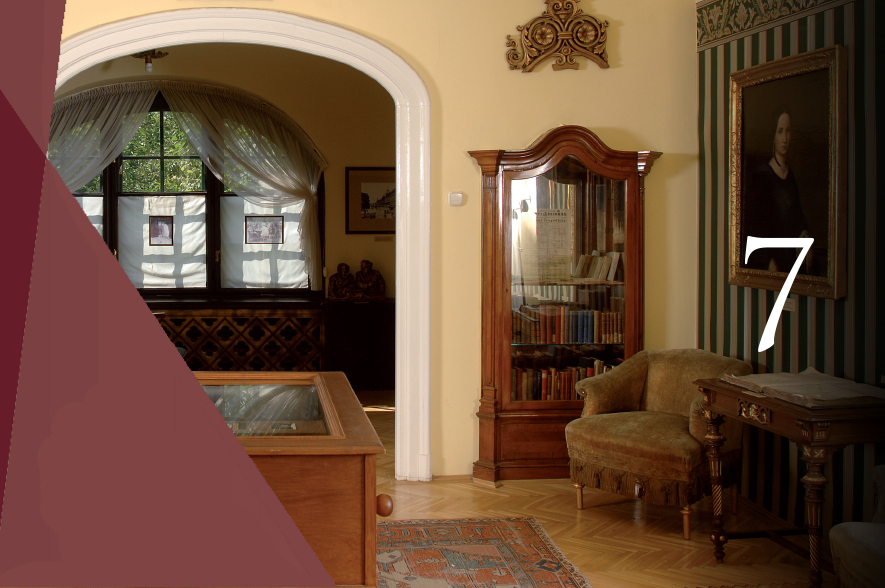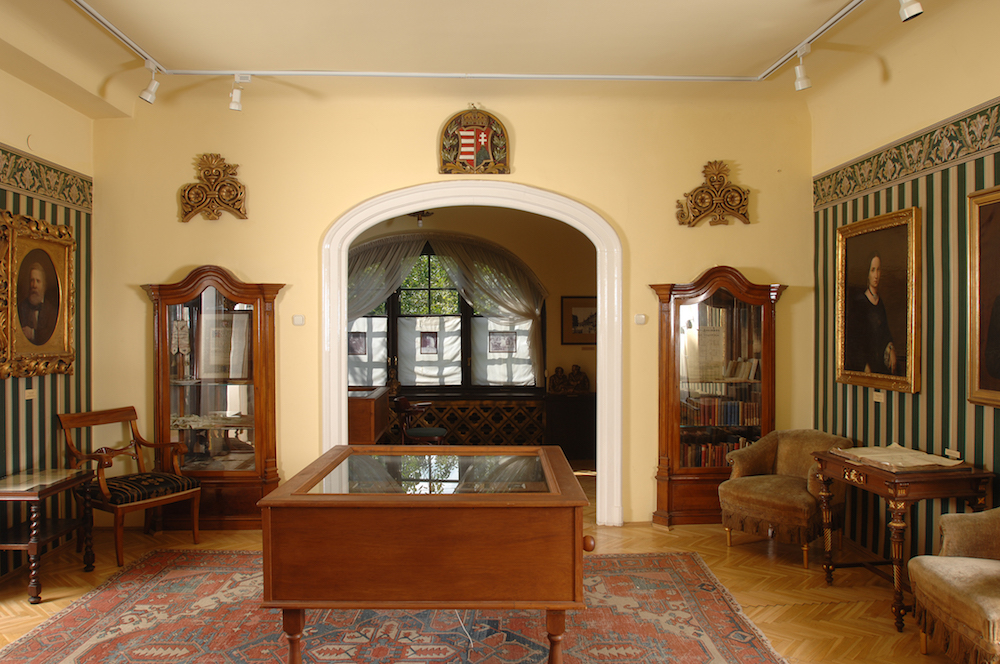
A következő helyiségben, a Nemzeti Színház igazgatói irodájában kezdődik a színjáték igazi élete. Itt kötnek szerződést a szerzővel, itt osztják ki a szerepeket, itt döntenek az előadások rendjéről. S végül itt derül ki az is, hogy mennyi volt a bevétel. Érdemes-e még játszani a darabot vagy új bemutatóról kell gondoskodni.
A szoba falán a Nemzeti Színház meghatározó jelentőségű művészeinek – Prielle Kornélia, Szerdahelyi Kálmán, Feleki Miklós, Lendvay Márton, Telepy György, Hevesi Sándor, Kéméndy Jenő, Szentpétery Zsigmond – portréja. Az egyik sarokban Szigligeti Ede íróasztala, vele átellenben a Kerepesi úton emelt Nemzeti Színház királyi páholyának asztala és foteljei, a falakon pedig az 1913-ban lebontott épület foszlányai: a királyi páholy címere, az egykori utcatábla.
A hatalmas szereposztó-könyv Hevesi Sándor 1923-as Tragédia-rendezését dokumentálja: kiolvasható belőle a Madách-műben azóta is alkalmazott szerepfüzér: ez volt az első olyan előadás, amikor az egyes színek kisebb szerepeit – egyiptomi rabszolga, athéni demagóg, agg eretnek, Robespierre és a falanszternek büntető aggastyána – ugyanaz a színész kapta. Érdekes belepillantani a kiállított Napi jövedelem és költséglap egyes rovataiba: 1861. augusztus 16-án A peleskei nótárius előadásának legnagyobb kiadását egy ló és egy lovas felléptetése okozta.
Paseczki Zsolt alkotó fantáziáját dicséri az az instrumentum is, melynek színházi látcsövén keresztül az érdeklődők A Nemzeti Színház múltja és jelene című némafilm jeleneteit láthatják. A megfakult kockákon Jászai Mari, Bakó László, Pálffy György, Hegyesi Mari, Márkus Emília alakja is feltűnik.
The Manager's Office
In the next room, representing the manager’s office, begins the true life of the theatre play. This is where contracts are signed with the author, this is where casting is done, this is where important decisions are made about the programming. And, finally, this is the place where the ticket income is counted. This will define whether it is worth playing the show again or the theatre must start rehearsing a new play.
The walls are covered with portraits of the most prominent actors of the early days of the National Theatre – Kornélia Prielle, Kálmán Szerdahelyi, Miklós Feleki, Márton Lendvay, György Telepi, Sándor Hevesi, Jenő Kéméndy, Zsigmond Szentpéteri. In one of the corners you can see the desk of playwright Ede Szigligeti, opposite to this a table and armchairs from the royal box of the National Theatre, while on the walls you can find some remnants from the theatre building which was demolished in 1913: the coat of arms from the royal box and the old street name sign.
The large casting book documents the 1923 performance of Imre Madách’s The Tragedy of Man, directed by Sándor Hevesi. This was the first time the smaller roles were performed by the same actor, which has, by today, become a convention. It is interesting to take a peek into the Daily Revenues and Expenses spreadsheet: the biggest cost incurring in the performance of The Scrivener from Peleske, played on 16 August 1861 was a horse and a horseman.
The clever little device that shows some fragments from the silent film The Past and Present of the National Theatre is also the merit of exhibition designer Zsolt Paseczki. The aged frames show glimpses of great actors like Mari Jászai, László Bakó, Györgyi Pálffy, Mari Hegyesi and Emília Márkus.

